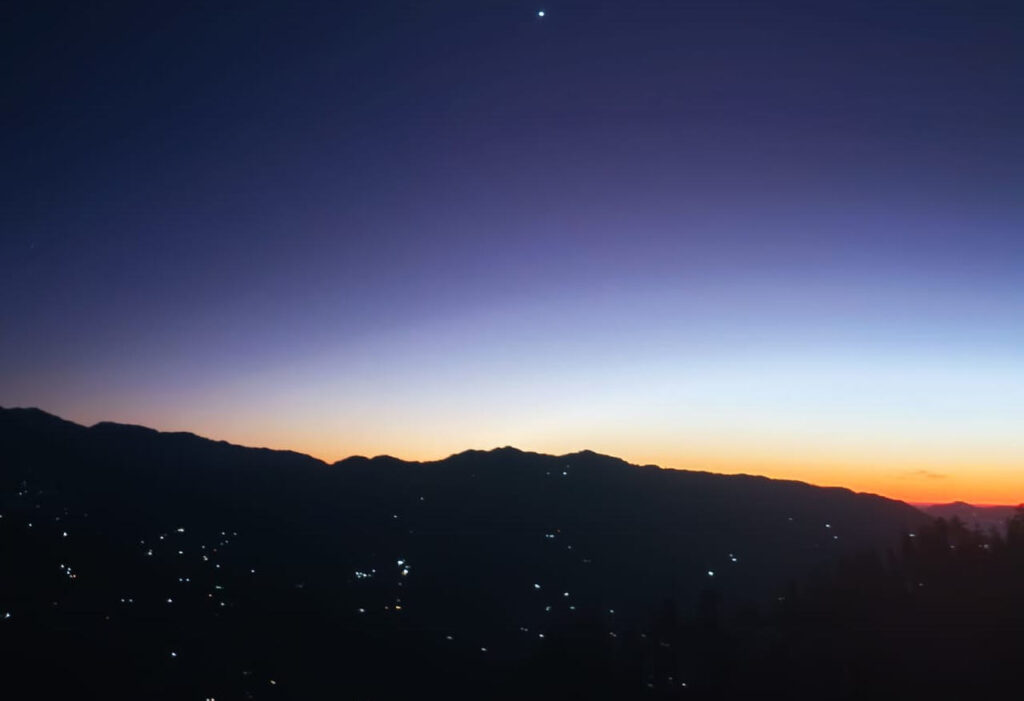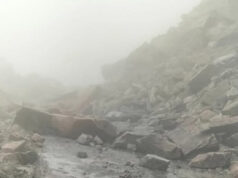
Himachal Pradesh is witnessing an unusual weather pattern this December, with mountain nights warmer than ever while the plains are gripped by an intense cold wave. A prolonged dry spell and lack of rainfall have caused Shimla, the state capital, to record the highest minimum temperature in the state, a surprising deviation from its usual winter chill.
On Saturday night, Shimla’s minimum temperature soared to 12.2 degrees Celsius, surpassing all other districts in the state. In stark contrast, Una, known as the hottest district during summer, recorded a bone-chilling -0.7 degrees Celsius. Kufri, a popular tourist destination near Shimla, reported a minimum temperature of 10.5 degrees Celsius.
The unusual trend is evident across Himachal. While Shimla experiences balmy nights, Dharamsala recorded a minimum temperature of 4.0 degrees Celsius, Palampur 3.5 degrees, Solan 1.6 degrees, and Manali 3.5 degrees. Other districts, such as Hamirpur (0.7 degrees) and Bilaspur (2.4 degrees), are grappling with much colder nights.
What’s Behind Shimla’s Warm Nights?
According to the Meteorological Department, the clear skies over Shimla are responsible for the warmer nights. Bright sunshine during the day heats up the surroundings, preventing significant temperature drops at night. The absence of cloud cover or precipitation further amplifies this effect.
In contrast, the plains are facing foggy conditions and overcast skies, leading to a rapid drop in temperatures. This divergence in weather conditions between the hills and plains is leaving meteorologists and residents alike perplexed.
Dry Spell Persists Across Himachal
Himachal Pradesh has been experiencing dry weather for an extended period, with no significant rainfall recorded in weeks. The Meteorological Center in Shimla has forecast clear skies to persist until December 22, offering no immediate relief.
A yellow alert has been issued for a cold wave in the lower hills and plains until December 20, warning residents to brace for harsher conditions. The lack of precipitation has also raised concerns about water scarcity and its impact on agriculture in the region.
Tourists Enjoy the Warmth, Locals Remain Wary
While the warmer nights in Shimla have been a pleasant surprise for tourists, locals are worried about the implications of this weather anomaly. “It feels more like spring than winter in Shimla this year. It’s strange but concerning,” said Ramesh Sharma, a resident of Lakkar Bazaar.
Tourist hotspots like Kufri and Mashobra are also witnessing a rise in visitors enjoying the unseasonal warmth. However, many express concern about the broader climatic shifts indicated by such anomalies.
The Broader Picture
Experts believe that changing global weather patterns, including the impact of climate change, may be contributing to such anomalies. The rise in Shimla’s minimum temperature and the simultaneous cold wave in the plains could be linked to disrupted atmospheric circulation patterns.
Additionally, the prolonged dry spell raises questions about water availability and snow cover, crucial for Himachal’s ecosystem and economy. The absence of early winter snowfall has already delayed seasonal activities in several regions, including the tourism sector, which relies heavily on snow-centric attractions.
With clear weather predicted for the next week, the current trend of warm nights in Shimla and cold conditions in the plains is expected to persist. While tourists continue to enjoy the unseasonal warmth in the hills, the implications of these weather changes could be far-reaching, impacting agriculture, water resources, and the overall climate of the region.











